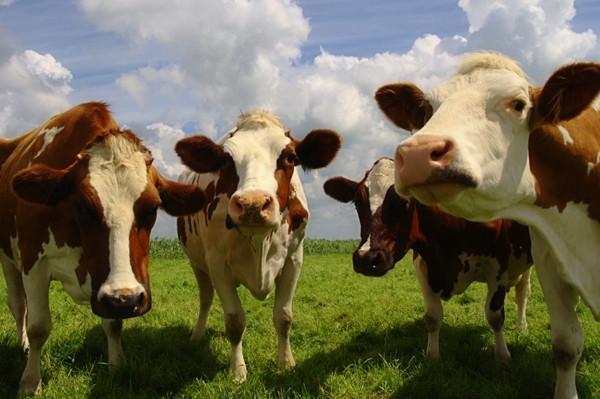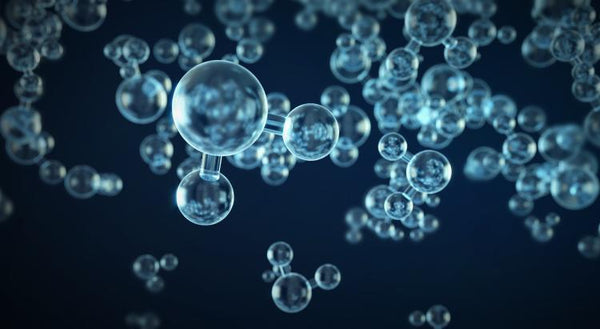4 Ways Grass Fed Milk is Better
![]() Feb 09, 2016
Feb 09, 2016

Grass fed milk. Grain fed milk. What’s the difference?
Is grass fed milk really better for you? There’s lots of hub-bub about the quality of food these days. What’s the big deal about whether your milk, cheese or beef are grass fed versus grain fed?Combinations of grain including corn and soy are the typical feed of mass produced cows or CAFO (Concentrated Animal Feeding Operations). Grains are perfect to fatten them up quickly and get a better price at market. Plus, that increased fat makes the meat more marbled, and thus can give better flavor. Fat is what enhances the flavor of foods – i.e. why most of us love high fat foods in general. But it’s not just the fat, it’s the type of fat. You want good fat that gives you energy, feeds your brain, organs and skin. Not unhealthy fat that clogs arteries, makes you tired and over-weight.
Cows’ bodies were perfectly built to break down grass. They even have two stomachs in order to get the most nutrients and fully break down the tough fibers. Cows by nature happily hang out in the field, graze on nutrient-rich grasses, and chew the grass cud to glean every bite of perfect nutrition.
1) Why Does Grass Fed make a Difference?
Grass is the natural diet of cows and is a rich green color due to chlorophyll. Chlorophyll is the blood or life force of plants. There is only one atom difference between chlorophyll molecules and those of human red blood cells. Chlorophyll has magnesium, and blood has iron. Therefore, chlorophyll is critical to the health of cows, and the quality of the milk and beef we consume.Grass fed terminology can be applied to all forms of cattle consumed, including the beef, bones, organs, and dairy: milk, cream, yogurt, kefir, and cheeses, etc.
2) The Emotional Difference
Happier cows provide happier milk. When stressed, our bodies release adrenaline and other stress hormones. Those flow through our bloodstream and into every cell. High stress would equal high stress milk, right? It would only be logical that milk from happy cows would also result in calmer, happier, more relaxing milk.Studies have shown that improving the diets fed to inmates by eliminating processed foods and increasing whole grains and live foods results in a substantial reduction in violence. Therefore, anxiety and aggressive behaviors may be directly related to the quality of food we ingest. A stronger, healthier body contributes to a calmer, happier you. The right types of fatty acids, like omega-3s, are essential to a strong balanced mind, healthy liver (the organ that stores anger), and radiant skin.
3) Why is Grass Fed Better for your Body?
One big difference is that milk from grass-fed cows has 3-5 times more CLA (conjugated linoleic acid) than milk from grain fed cows. This good fatty acid has been shown to offer a ton of health benefits including: lowering insulin resistance; decreasing cholesterol; lowering triglycerides; strengthening the immune system; increasing muscle growth; and even helping with asthma, high blood pressure, and cancer prevention.
According to Dr. Mercola, the world’s #1 health website mercola.com, “animal studies show that as little as 0.5 percent CLA in your diet could reduce tumors by over 50 percent, including …breast, colorectal, skin, lung and stomach” cancers.
Consider another important health difference. Cattle that eat a pastured diet, result in about a 1:1 ratio of omega-6 to omega-3 fatty acids, which is considered a highly healthy ratio. What about grain-fed cows? The grain diet results in a damaging ratio of about 6:1. That ratio has been shown to increase inflammation and may be a high risk concern leading to chronic diseases.
4) And finally, What is “Grass fed versus Grain finished”?
If you’ve ever inquired about whether your beef was grass fed or grain fed, your grocer or meat man may have told you, “this beef is grass fed and grain finished." That typically means the cattle were grass fed for the early stages, and then fed grain for the last few weeks or months to help fatten them up and improve the marbling in the beef for flavor.
The word “grass fed” should be printed on the label, which ensures the cattle have never eaten any grain, only grass. This might not matter to you when it comes to flavor. But when it comes to the CLA and omega-3 content, grass fed may truly be a wiser, healthier and emotionally happier option.
Want to learn more about the emotional impact of beverages? Check out Kaliana's book Coffee, Chocolate & Confidence and discover the emotional impact of over 70 different beverages!
Disclaimer: This article is not intended to provide medical advice, diagnosis or treat. This information is based on research and knowledge by the author, and the ideas are not intended as substitute for medical advice. As with any products it is suggested that you check with your medical practitioner prior to use. The author disclaims any liability arising directly or indirectly from the use of any products mentioned herein.













There are no comments for this post.
Leave a comment